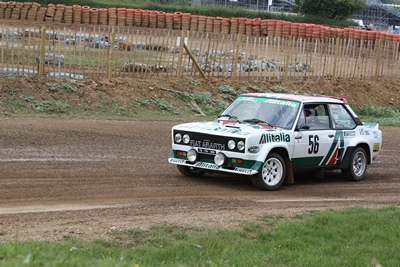Background
The Fiat 131 road car was announced in September 1974, and launched with either a 1.3 or 1.5 litre push rod engine which produced a paltry 65bhp or 75bhp finished with a four speed gearbox. These figures were not that auspicious, but as the car was launched just after the oil crisis of 1973, fuel efficiency was more important to management team of Fiat than high performance cars, a view shared by the car buying public, as by 1976 it was Fiat’s second best selling car. Therefore Fiat decided to produce a works supported rally car out of the 131 Mirafiori, which they hoped would offer Fiat huge potential for marketing if a successful program could be put together. The most obvious choice for competition partner was the in-house motorsport team Abarth who already knew a lot about the chassis, the car and its components.
The choice of the body shell was the two door version designed by Bertone, which was very rigid and therefore ideal a solid platform for both Group 1 and Group 4 modification, although a weight loss program was required which would result in thin GRP panels being used extensively, with Perspex side and rear windows. The heart of the rally challenger would not be the paltry 1.3 or 1.5ltr, but the recently introduced 2 litre Twin Cam Sport.
By the time Abarth 131 Rally was retired, it had secured three World Rally Championships, in 1977, 1978 and 1980, and 18 WRC rally victories. Its drivers, which included Fulvio Bacchelli, Markku Alen, Michele Mouton and Walter Rohrl were rewarded with World Rally Driver's Championships in 1978 and again in 1980.
Technical
Engine : Four-cylinder, 2ltr, in-line, longitudinally mounted in the front of the car, four valves per cylinder, 215 bhp
Induction : Fuel Injected, Normally Aspirated

